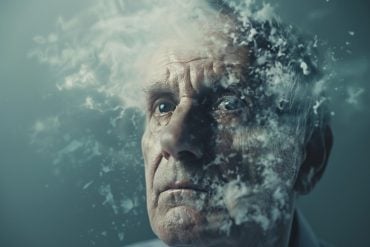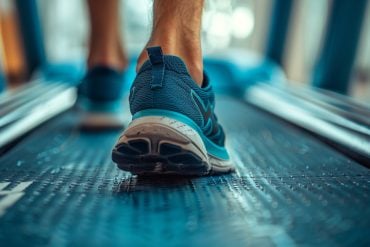Summary: A machine learning algorithm shows that during sleep, the brain actively reprocesses information learned the previous day, strengthening the memory.
Source: University of Tübingen.
University of Tübingen neuroscientists use machine learning algorithm to show that the brain actively reprocesses previously learned information during sleep, strengthening memory.
Sleep helps us to retain the information that we have learned during the day. We know from animal experiments that new memories are reactivated during sleep. The brain replays previous experience while we sleep – and this replay strengthens memories overnight. Up to now, it was hard to demonstrate such a reactivation in humans, because the activity of individual neurons cannot be observed and most memories will activate entire networks of brain regions. Scientists from Tübingen have now applied new statistical pattern detection methods from the field of machine learning to get around these problems.
The researchers recorded brain activity during sleep with electroencephalography (EEG). They measured electrical brain activity in participants who had previously studied different kinds of pictures under varied learning conditions. They then trained a support vector machine – a computerized algorithm for pattern recognition – to distinguish these different learning conditions. The algorithm was then applied to new test subjects, and was able to predict which kinds of pictures they had studied before sleep – based only on their electrical brain activity during sleep. Learning those images must thus have impacted the sleeping brain’s activity.
In their study, which has been published in Nature Communications, the neuroscientists show that humans also reprocess recent memories in sleep. They found signs of such a reprocessing in deep slow-wave sleep as well as in REM sleep. “The stronger the signs of reprocessing in sleep, the better our subjects remembered the material in the morning. Thus, our study provides initial evidence that sleep-dependent processing of memories actually leads to their stabilization”, explains Dr. Monika Schönauer, who has implemented the study and analyzed the data together with her colleague Sarah Alizadeh. Most interestingly, the influence of reprocessing on memory retention was found in slow-wave sleep, but not in REM sleep. “Slow-wave sleep and REM sleep both seem to participate in memory processing. However, they must have different functions”, concludes Schönauer from these findings. Now it is particularly important to gain an understanding of the function of REM sleep, she says.

A major part of the research project was finding a method that could identify precisely those fluctuations of brain electrical activity in sleep which were caused by previous learning. “We had to find a way to detect tiny, learning-related patterns in the vast expanse of brain activity during the night”, says Dr. Steffen Gais, who was the leading scientist. With the help of multivariate pattern recognition algorithms, the researchers were able to extract specific information about previously learned material from human electrical brain activity. Gais is confident with regard to future studies: “Pattern recognition is a highly sensitive method, which is becoming more and more widely adopted in the life sciences. I am certain that it will enable breakthroughs especially in cognitive neurosciences, where it will allow us to investigate previously hidden processes like dreams and spontaneous thought processes.”
Source: University of Tübingen
Image Source: NeuroscienceNews.com image is in the public domain.
Original Research: Full open access research for “Decoding material-specific memory reprocessing during sleep in humans” by M. Schönauer, S. Alizadeh, H. Jamalabadi, A. Abraham, A. Pawlizki & S. Gais in Nature Communications. Published online May 17 2017 doi:10.1038/NCOMMS15404
[cbtabs][cbtab title=”MLA”]University of Tübingen “Finding Traces of Memory Processing During Sleep.” NeuroscienceNews. NeuroscienceNews, 20 May 2017.
<https://neurosciencenews.com/sleep-memory-6735/>.[/cbtab][cbtab title=”APA”]University of Tübingen (2017, May 20). Finding Traces of Memory Processing During Sleep. NeuroscienceNew. Retrieved May 20, 2017 from https://neurosciencenews.com/sleep-memory-6735/[/cbtab][cbtab title=”Chicago”]University of Tübingen “Finding Traces of Memory Processing During Sleep.” https://neurosciencenews.com/sleep-memory-6735/ (accessed May 20, 2017).[/cbtab][/cbtabs]
Abstract
Decoding material-specific memory reprocessing during sleep in humans
Neuronal learning activity is reactivated during sleep but the dynamics of this reactivation in humans are still poorly understood. Here we use multivariate pattern classification to decode electrical brain activity during sleep and determine what type of images participants had viewed in a preceding learning session. We find significant patterns of learning-related processing during rapid eye movement (REM) and non-REM (NREM) sleep, which are generalizable across subjects. This processing occurs in a cyclic fashion during time windows congruous to critical periods of synaptic plasticity. Its spatial distribution over the scalp and relevant frequencies differ between NREM and REM sleep. Moreover, only the strength of reprocessing in slow-wave sleep influenced later memory performance, speaking for at least two distinct underlying mechanisms between these states. We thus show that memory reprocessing occurs in both NREM and REM sleep in humans and that it pertains to different aspects of the consolidation process.
“Decoding material-specific memory reprocessing during sleep in humans” by M. Schönauer, S. Alizadeh, H. Jamalabadi, A. Abraham, A. Pawlizki & S. Gais in Nature Communications. Published online May 17 2017 doi:10.1038/NCOMMS15404







